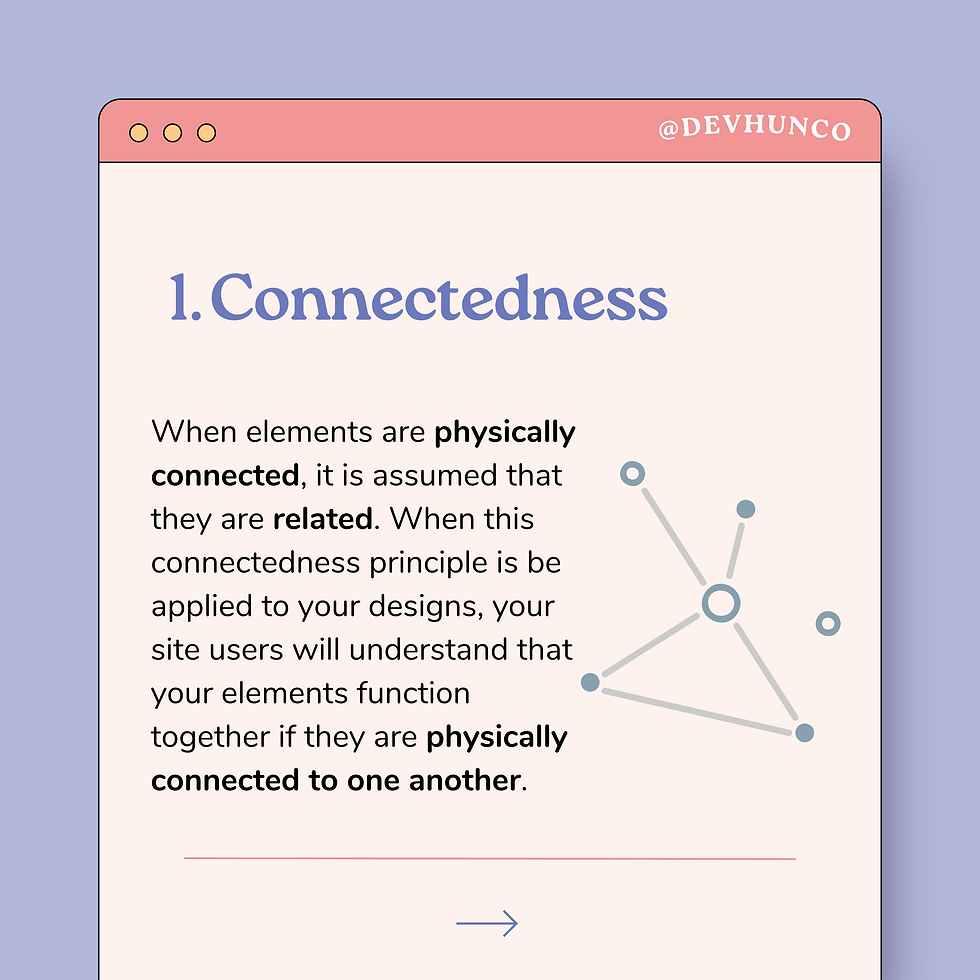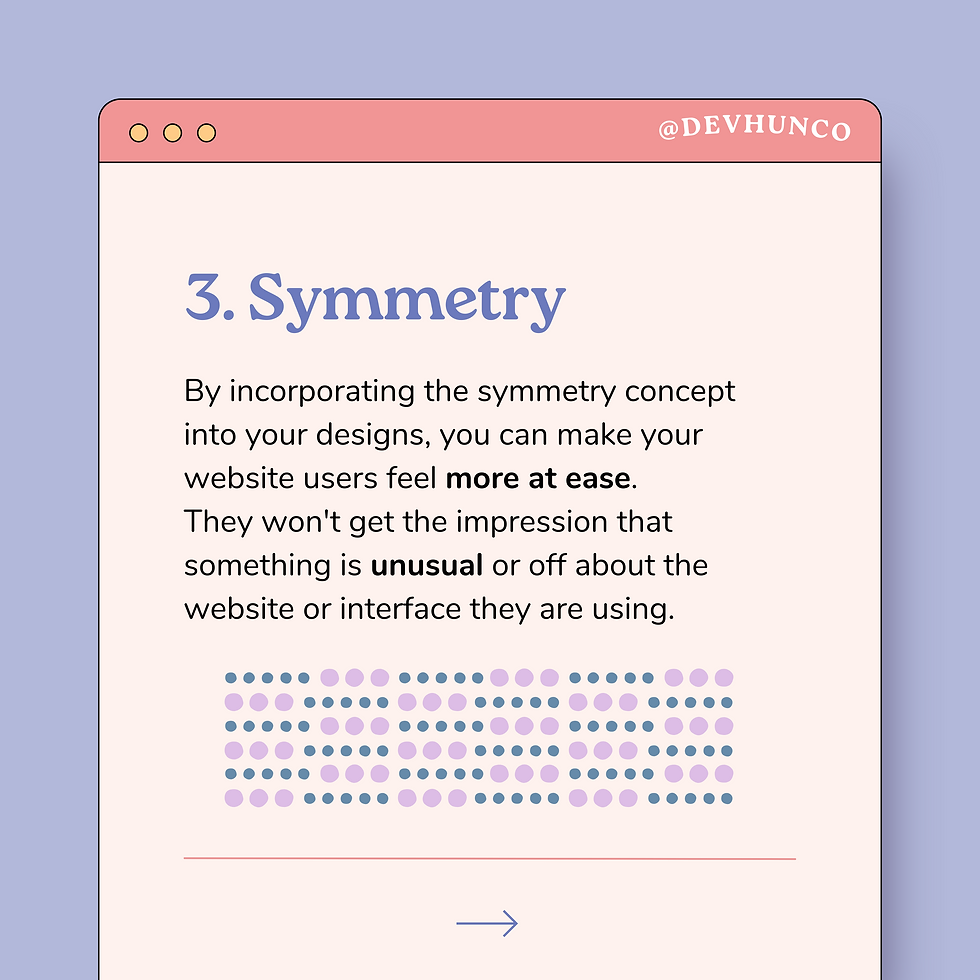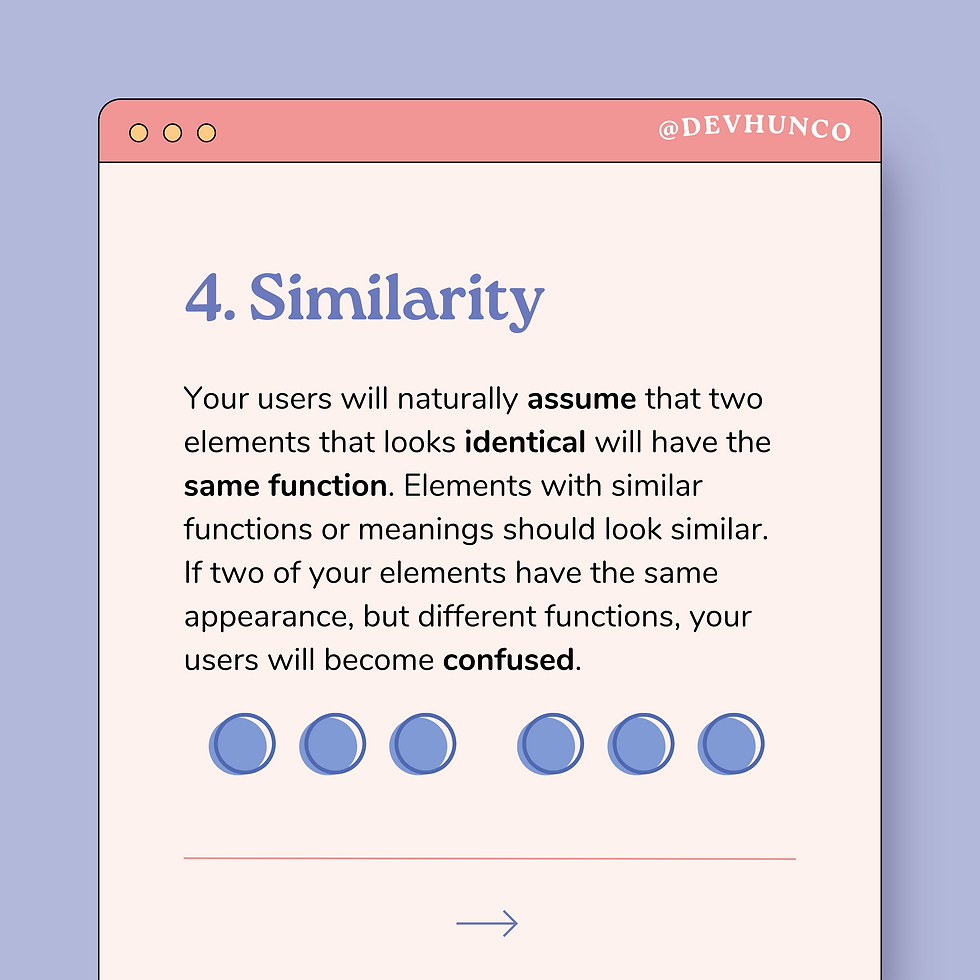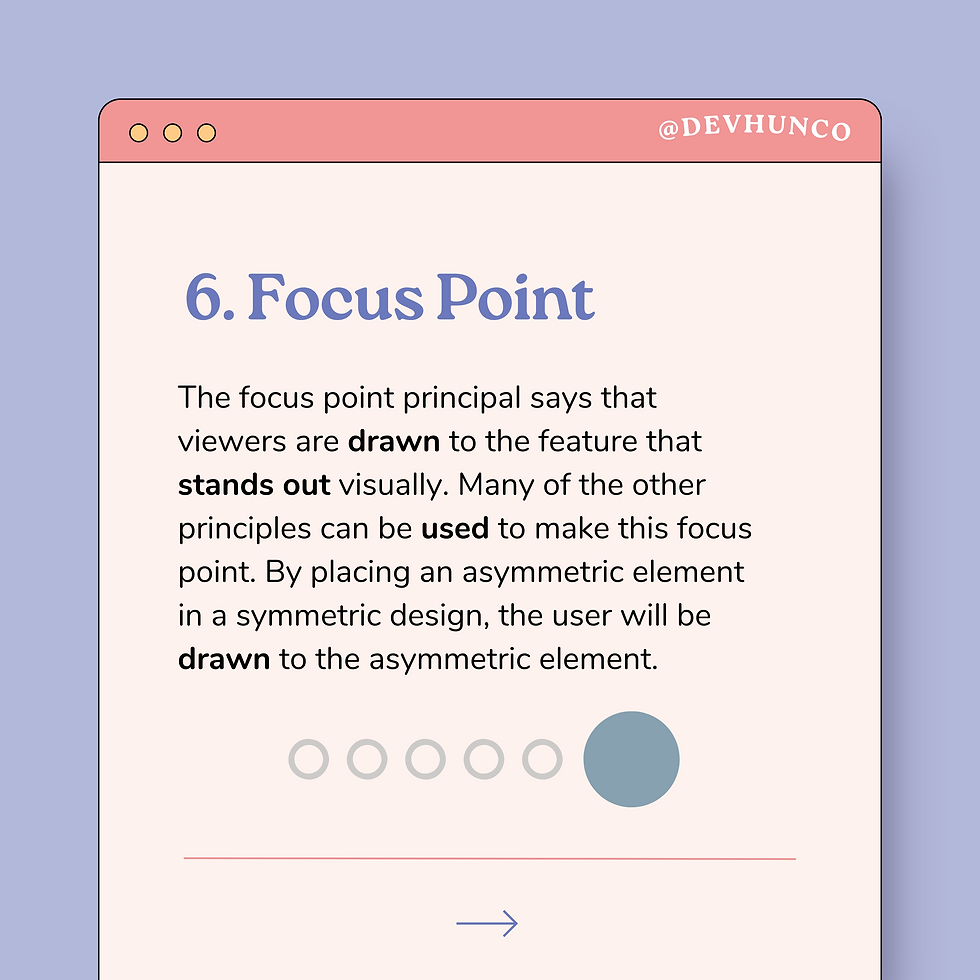The Gestalt Principles Explained (in Web Design)
- Devhun
- Oct 24, 2022
- 2 min read
Updated: Jan 16, 2023
Here’s a quick post introducing you to some of Gestalt's Principles of Design, and show you how you can implement them into your website design.


1. Connectedness
When elements are physically connected, it is assumed that they are related. When this connectedness principle is be applied to your designs, your site users will understand that your elements function together if they are physically connected to one another.

2. Figure & Ground
Naturally, we can tell whether something is in the foreground (and is perceived as a main focal element), or whether it is in the background. We also recognize that the foreground is more significant than the background

3. Symmetry
By incorporating the symmetry concept into your designs, you can make your website users feel more at ease. They won't get the impression that something is unusual or off about the website or interface they are using.

4. Similarity
Your users will naturally assume that two elements that looks identical will have the same function. Elements with similar functions or meanings should look similar. If two of your elements have the same appearance, but different functions, your users will become confused.

5. Proximity
The most significant of these principles is proximity - that when things are close together, we tend to think they're related. Even if elements are the same color, your website visitors will not naturally group two elements together unless they are close in proximity.

6. Focus Point
The focus point principal says that viewers are drawn to the feature that stands out visually. Many of the other principles can be used to make this focus point. By placing an asymmetric element in a symmetric design, the user will be drawn to the asymmetric element.

For more, visit our website at devhun.com This originally appeared on our Instagram. View the post here: https://www.instagram.com/p/CkG6HEKOzKk/



Comments